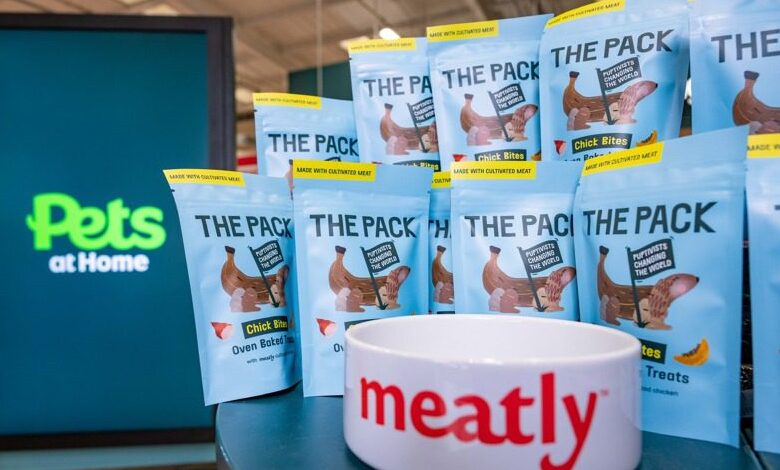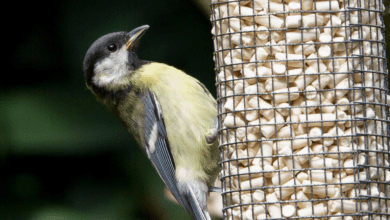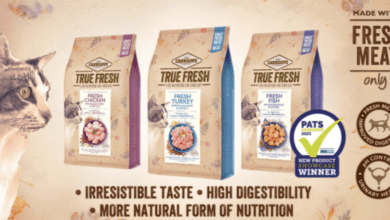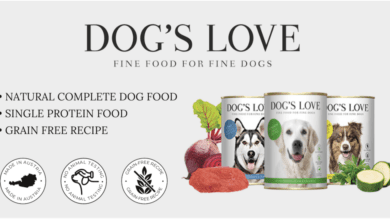Lab grown meat vs real meat: The future of pet food
Meatly has made history as the first company to supply cultivated meat for pet food. Despite its environmental and ethical potential, the pet food industry remains cautious, with concerns over cost, palatability, and enrichment. Deborah Burrows, founder of Healthy Pet Store, and Anja Madsen, COO at Pets at Home, discuss the challenges and opportunities surrounding lab-grown meat in pet food and the growing interest in sustainable options among pet owners

On 7 February 2025 Meatly became the first company in the world to supply cultivated meat for pet food on sale. Produced in collaboration with plant-based dog food brand The Pack, a limited-release of ‘Chick Bites’ is now on sale at Pets at Home Brentford, London.
Chick Bites aims to combine plant-based ingredients with Meatly Chicken, to provide a nutritious, healthy and sustainable alternative to traditional dog treats. To produce Meatly Chicken a single sample of cells was taken from one chicken egg, from which enough cultivated meat can be produced to feed pets forever.
With the launch of Meatly Chicken, Meatly plans to raise additional funds to expand production and make it more broadly available in the next three to five years, with further collaborations planned with The Pack and Pets at Home.
While this innovation is revolutionary and is testament to the UK’s commitment to scientific advancement and sustainability, the pet food industry has raised questions about its ability to provide the necessary enrichment for pets, high production costs, its palatability, and the potential impact on the farming industry.
Deborah Burrows, founder of Healthy Pet Store, acknowledges that lab-grown meat may be comparable to traditional meat in terms of vitamins, minerals, and amino acids, though she emphasises that this would need to be verified. “What I do know is that, when it comes to enrichment, lab meat just doesn’t offer anywhere near the same benefits that real, whole foods provide for dogs or cats,” she says.
“For me, that’s the main concern, the lack of enrichment.” She explains that lab-grown meat is essentially pre-minced, lacking key components like bones, cartilage, and gristle. “Chewing on these elements provides so many benefits, not just for dental health but for a pet’s overall well-being,” she adds.
However, on the other hand, Anja Madsen, chief operating officer at Pets at Home, believes that the introduction of cultivated meat in pet food is a “significant leap forward for the industry and has the potential to be a real game changer”.
She says: “Cultivated meat maintains the nutritional quality of traditional pet food while reducing the environmental impact associated with meat-based food. As pet owners become more mindful of the impact their food choices have on the environment, cultivated meat provides an ethical and sustainable option without compromising on nutrition and taste.”
While cultivated meat offers a more sustainable and ethical alternative, the costs associated with its production remain a significant hurdle.
“Because the meat industry is so well-established and competitive, we can provide high-quality food for pets at a very reasonable price,” she explains. “For example, in some cases, chicken can cost as little as £2 per kilo.”
In contrast, she points out that lab-grown meat is still in its early stages and remains prohibitively expensive. “Right now, the price per kilo is astronomical—it’s just not affordable for everyday pet owners,” she says.
Burrows notes that only a handful of companies are investing in this technology. “As far as I know, the only company currently working on this is Meatly, backed by Pets at Home. But even they’re only incorporating a tiny amount of lab-grown meat into their biscuits. It’s more of a luxury ingredient than a viable alternative for full meals,” she adds. “So, for now, that’s where we stand.”
Madsen also states that as with any new innovation, the initial costs associated with cultivated meat will be higher due to the complexity of the production process and the limited scale of manufacturing.
However, she is “optimistic” that as this scales up in coming years, and that “prices will become more competitive”. She also states that she is seeing many pet owners are increasingly willing to invest in sustainable products that align with their values.
“So while price remains an important factor, one of the reasons Pets at Home decided it was the right time to try it out is because production costs and consumer appetite and willingness to spend are starting to align,” she explains.
Madsen emphasises that the group is always looking ahead in pet care and nutrition, exploring ways to help pet owners meet their pets’ needs in ways that matter to them personally.
“Pets at Home was an early investor in Meatly, reflecting this approach and ensuring that we don’t just sell products, we help develop them too,” she explains.
The decision to invest in Meatly and bring its products to market was guided by several key factors. “First and foremost, quality is key, and the nutritional profile of Meatly and Chick Bites really stands out,” Madsen says.
“Compared to traditional meat, it has significant potential to reduce carbon emissions, land use, and water consumption in pet food,” she notes.
Beyond nutrition, she highlights the sustainability benefits of cultivated meat. “Compared to traditional meat, it has significant potential to reduce carbon emissions, land use, and water consumption in pet food,” she notes.
Madsen also acknowledges the growing demand for more sustainable choices among pet owners. “It’s important to us to reflect our customers’ values, and there’s definitely increasing interest in sustainability. We felt this was the right time to introduce an innovation that aligns with those values,” she adds.
Burrows also acknowledges the environmental concerns that come with feeding real meat to companion animals. “The reality is, if you have a meat-eating companion animal, you’re contributing to an energy-intensive industry. It’s not entirely unethical, but it’s certainly not sustainable. That’s just the reality of having a meat-eating pet,” she explains
Recognising that dogs can survive on vegetarian or vegan diets, she points out that cats cannot. “Cats shouldn’t be eating vegetarian or vegan food at all,” Burrows adds. However, she sees potential in lab-grown meat as a solution to the ethical and environmental issues surrounding meat production. “It could be a massive step change in the industry, and I’d be thrilled to see it happen,” she says, emphasising the opportunity to reduce the environmental impact of global meat production.
She highlights two different mindsets among pet owners when it comes to feeding their pets. “Some want food that doesn’t resemble the animal it was derived from. That’s why kibble and processed pet foods became so popular,” she explains.
As a result, Burrows believes these pet owners would likely be early adopters of lab-grown meat, particularly if it becomes affordable. “But there’s a larger portion of the public that still wants to feed their pets real meat and bone—they want that traditional experience.”
She also notes that lab-grown meat could present serious challenges for the farming industry. “Imagine the potential if farmland currently used for livestock could be reforested or repurposed for other environmentally beneficial initiatives. But we have to be careful with that message, because our industry is an end user of farming. It’s a tricky balance.”
“If you’re growing meat in a lab, what flavour will it have? Dogs and cats enjoy a wide range of meats like venison, lamb, chicken, turkey, and fish. But will we be able to see lab-grown fish, too?”
Additionally, she states that both the media and the raw feeding community have generally responded negatively to lab-grown meat, mainly due to concerns about its limited flavour variety compared to natural meat.
“If you’re growing meat in a lab, what flavour will it have? Dogs and cats enjoy a wide range of meats like venison, lamb, chicken, turkey, and fish. But will we be able to see lab-grown fish, too?”
Lab-grown meat is currently used only in small quantities in basic biscuits. “At this point, it’s not feasible to provide complete meals with lab-grown meat,” Burrows continues. “Even if the nutritional profile were acceptable and a dog could survive on it, lab-grown meat just doesn’t offer the same enrichment. It lacks the variety, flavours, textures, and overall experience that natural feeding provides. It’s clear that lab-grown meat doesn’t meet the needs we address with traditional raw feeding,” she adds.
However, Madsen states that over the past few years, Pets at Home has seen a noticeable shift with more pet owners seeking out “sustainable and alternative protein options for their pets”.
She says: “Whether it’s plant-based treats or insect-based, there’s a growing awareness of the environmental impact of pet food, and customers are eager to explore choices that align with their values while ensuring their pets receive the nutrition they need. The positive reception of Chick Bites is a testament to this growing interest.”
As a result, according to Pets at Home, educating its customers is a key part of introducing any new innovation to our pet care centres.
Madsen explains: “We emphasise that cultivated meat is nutritionally equal to traditional meat but produced in a way that reduces the impact on the planet. At the same time, we’re always open to addressing any questions or concerns that customers may have, ensuring they have the information they need to make informed choices for their pets.”
As for the pet food industry, Burrows senses both curiosity and caution. “It’s still very early days. We’ll have to see how things unfold,” she says.
“Personally, I’m interested to see if lab-grown meat takes off. If it does, it would be a huge shift—but it remains to be seen whether it will become mainstream.” Retailers, she adds, are watching closely. “Everyone’s waiting to see how this plays out.”











